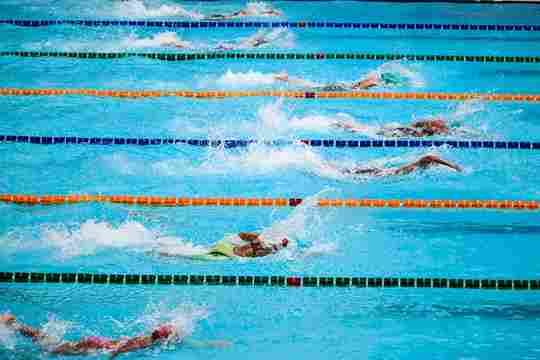Exclusive Swimming Guide | Learn 8 Different Swimming
Stroke Styles & Their Benefits
Swimming strokes are important to get a good grip on this extensive workout. It helps to polish your swimming skills. That’s why it is suggested to learn as many swimming stroke styles and techniques as you can.
Whether you practice swimming for any competition, exercise, or take it as a fun activity, it’s always advised to take proper swimming lessons.
That’s how you can improve your swimming style. It should be a religious obligation for competitive swimmers especially, to learn different types of swimming strokes.
What is a Swimming Stroke?
Strokes are generally a repeated movement of limbs and bodies used in swimming/rowing. However, swimming strokes are peculiar swimming techniques of moving hands in front of the water and propelling the body forward.
In other words, you are mainly activating muscle groups such as your abdominal, hip, quadruples, and hamstring muscles. They mainly involve various body movements that include different types of kicking, reaching, arm pull and arm push.
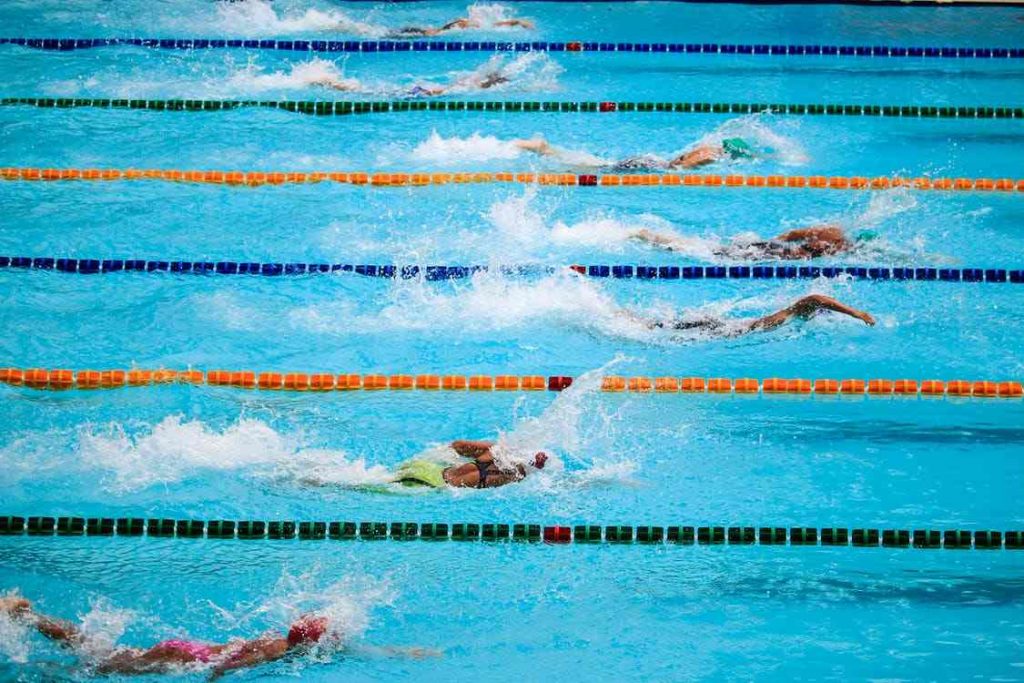
Among the most common kicking types, flutter kick, scissor kick, dolphin kick, and whip kick are included.
Most commonly, there are four main swimming strokes that are popular for all sorts of swimming. Notably, there are several distinctions and commonalities within each stroke and among the swimmers.
Importance of Swimming Strokes
Swimming strokes are always worth-learning. It teaches swimmers the best possible body motion to propel the body forward. Precisely speaking, the importance to learn different types of swimming strokes is undeniable.
No matter whether you are a competitive swimmer, or swim to relax your mind, learning different techniques of swimming strokes will help you to perform better and get the most out of this mind-relaxant physical activity.
We can further narrow down its importance to the following categories.
- For the competition, the body flexibility and mobility will eminently help in multiple events.
- For exercise, different muscles help in performing certain strokes, so learning the strokes will give you a better exercise and fewer injuries in your body.
- For safety, different stroke combinations are available depending on the dangers.
Different Swimming Strokes & Their Benefits
Most popular swimming strokes include front crawl or freestyle, breaststroke, backstroke, and butterfly stroke. Please note that these strokes are particularly best for competitive swimming. Also, the aforementioned strokes are the four main swimming strokes.
Among other swimming strokes, sidestroke, elementary backstroke, arm stroke, trudgen, and combat sidestroke are included.
In this article, we will cover the five main swimming strokes that will improve your swimming skills to the best possible extent. Also, the article aims to provide the best descriptive understanding of the swimming technique used for these stroke types.
1. Freestyle Stroke
Freestyle is a common swimming stroke commonly practiced by competitive swimmers. Also, it is considered the fastest swimming stroke technique for competitive swimming. The prone position of this stroke is stomach facing.
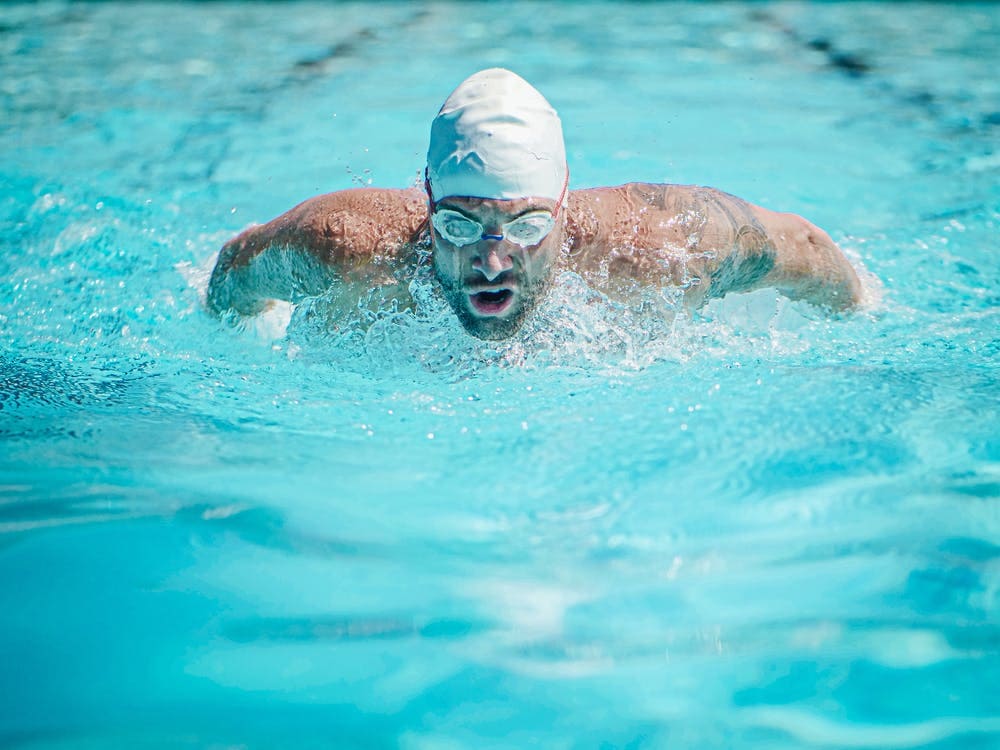
Freestyle Stroke Technique
To execute the free-style stroke technique, you need to lie on your stomach and keep your body parallel to the water.
In simple words, your starting position will be stomach facing. Subsequently, your arms and legs will carry you through the water whilst your torso remains secure. Your arm movements are alternate, move in a windmill motion.
Precisely speaking, the arm will arc upward in the water as you move the other arm towards you in the water close to you. All arms will enter the waters in alternating directions, their fingers positioned straight and together so the resistance is minimized.
Notably, your arm and leg movements play a crucial role in this stroke. Besides, use the flutter kick to complete your free stroke techniques.
Benefits of Freestyle Stroke
- You’re going to burn thousands in 1-2 hours swimming freestyle.
- Freestyle, preferred to long swimmers, is considered an efficient exercise method. This exercise allows the free stroke to be faster but requires less energy.
- The freestyle is an excellent exercise program for the whole body. It strengthens your back and shoulders. Freestyle stokes are perfect to strengthen your body muscles.
2. Butterfly Stroke
Butterfly swimming strokes may be more challenging than other swimming strokes. Also, this is the second-fastest competitive stroke that requires considerable coordination.
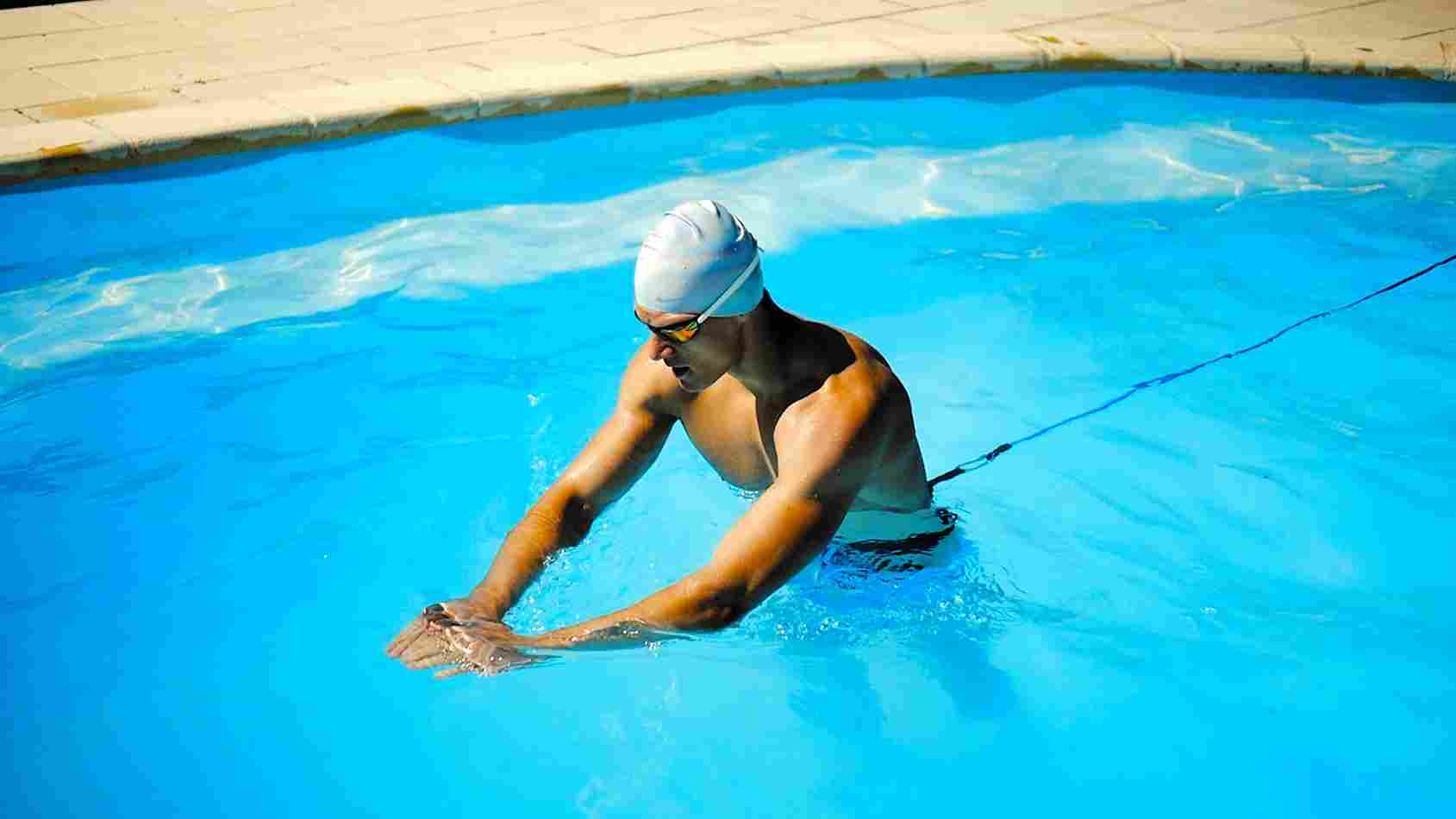
Butterfly Stroke Technique
The butterfly’s name comes from the movements of the swimmer’s arms in the swimming stroke. Your shoulder muscles extend outward in the air like wings. You are in the same prone position that the freestyle or breaststroke requires.
Precisely speaking, you need to keep your hands behind you, palms towards your face and your hands towards the ocean. Then, you will sweep your arms downward with an elongated elbow. You’ll have a Y-shaped arm next to your body.
Afterwards, your hands will be parallel to you. Note that, this swimming technique is also referred frog’s movement in which your arm and legs perform equally.
Benefits of Butterfly Stroke
Along with the fastest competitive stroke, this stroke technique is also a fantastic workout that offers plenty of benefits. Due to this it is the preferred choice of every swimmer, especially competitive swimmers. Some of these are mentioned below;
- The butterfly stroke style helps in the fastest burning of the most calories. The ratio of its burning capacity is way greater than other swimming strokes. This extensive swimming stroke tends to burn more than 400 calories in 30 minutes.
- Also, this stroke type helps in combining core and upper body training in an incredible way..
- It keeps your body stable by supporting your core body muscles.
- The prone position of your body with this stroke style improves the overall flexibility of your body.
Besides, this swimming stroke technique involves certain complicated movements which is why it is best for competitive swimmers.
3. Breaststroke
Breaststroke is considered a common swimming stroke and ideally best for inexperienced swimmers who are in the learning phase.
For someone who wants to start swimming, breaststroke is the best option available. Breakstroke offers an alternative to freestyle that is more slow and fun.

Breaststroke Technique
As with freestyle breaststroke, the stroke consists of two different arms and leg movements. In simple words, you are in the same horizontal position as you do in the Freestyle, but make different movements as you sail into the water. Those arm movements must be synchronized.
To properly execute this technique, you will be bent on your shoulder and then pull up to your chest, remaining submerged the entire swim. When the arms are moving at such a rapid speed the legs push you with a technique known as a whip kick or frog kick. In a typical stance, your leg is about two feet behind you.
Benefits of Breaststroke
It won’t be wrong to state that the most common benefits of swimming are found in this stroke technique. Here are its main benefits.
- Each 30-minute swim in breaststroke burns around 200 calories.
- Breastroke is a relatively easy stroke learner which means that you can concentrate on training and not worry about the correct motion.
- As with all swimming strokes, breaststroke involves several muscles. It is especially beneficial to work your hamstring muscles and your chest muscles.
3. Sidestroke
Sidestrokes were an older swimming stroke not used anymore during competitions and were largely forgotten. This technique allows the swimming to take place with great relaxation and efficiency.

Sidestroke Swimming Techniques
Sidestrokes are swans lateral to lateral positions. Swimmers stay on the same side throughout all strokes. Also, it is the slowest swimming stroke that mainly involves separate functioning of the upper arm and lower arm while allowing your head to stay on the surface of the water.
In this technique, the body turns inward and a little upward, and the face remains above the water for the entire time. During the lateral beginning, both hands extend and hold each other together. The upper hand rests at the body side while the lower hand extends outward.
The upper arm’s lower arms are pulled forward in the water from forwarding extended positions toward the breast, causing thrust in the initial stroke.
In this manner, the upper hand moves forward across the body to the point where they are angled towards the chest.
Benefits of Sidestroke
The best-known or the most potential benefits of sidestrokes are mentioned below.
- It ensures the fastest burning of calories in comparatively less time which makes this stroke type a fantastic workout.
- This stroking technique is commonly used to execute research operations with water.
- In this technique, your head remains above the surface of water and muscles in the best action plan which is why it is considered an excellent workout.
4. Backstroke/ Elementary Backstroke
Backstroke is another slowest swimming stroke. As its name suggests, you will position your body upward. Contrary to freestyle stroke poisoning, you will keep your back on the water. Also, just like the sidestroke technique, your face will remain above the water’s surface.
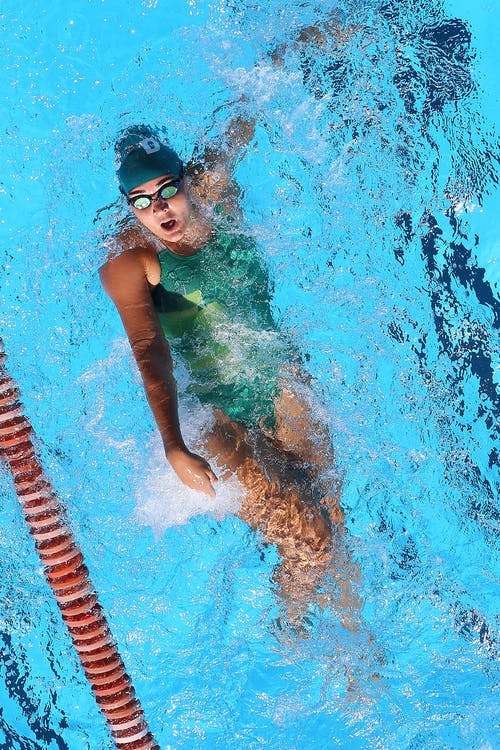
Backstroke Technique
Backstrokes are considered a mirror image of freestyle. The water pointing upwards. Your body should be kept horizontally and looking upward. Your arms move in a windmill-like way.
One arm emerges from the ocean and runs over the ground. You will change these movements keeping your hands close to your ears when the waters recede. You also should have your arms positioned so they do not touch each other to reduce the pressure.
Benefits of Backstroke
The benefits of any swimming stroke usually depend on what you want from a swim session. Certainly, backstroke has many benefits different to other strokes. The most potential ones are stated below.
- Just like breaststroke, backstroke burns around 200 calories per minute.
- Backstroke can help improve your posture by keeping your muscles in optimum position at a comfortable angle. It works the core, and arm muscles as well as the arm.
- Also, it helps you to develop hip stability.
Frequently Asked Questions
1. Is butterfly or breaststroke harder?
For people who don’t swim professionally, butterflies can be terrifying. The stroke can be the most challenging to understand, and it will require considerable power if it is to begin to match the speeds that are the rest of the stroke. The fat burner burns 820 calories every hour.
2. What movements are involved in swimming?
In other words, you are mainly activating muscle groups such as your abdominal, hip, quadruples, and hamstring muscles. The strokes are divided into various movements that include kicking, reaching, kicking and holding, pulling, pushing, or retraining.
3. What is the best swimming method?
Freestyle or Front crawl are popular swimming exercises and are the fastest swimming action. This means you’ve been given a much higher level of efficiency compared to other strokes.
The stroke is the favorite stroke of many swimmers and is widely used to swim long distances due to its efficacy.
The Bottom Line
Swimming strokes are important to properly learn and practice under the supervision of experts. Swimming is a skill that can turn into an excellent workout through the proper execution of swimming techniques.
The aforementioned swimming techniques will be sufficient to provide you complete swimming strokes guide. Carefully read each and decide accordingly to your aptitude and body’s flexibility.
We would suggest you give preference to breaststroke if you are a beginner and eventually move to the complicated one i.e. butterfly and freestyle swimming strokes.

